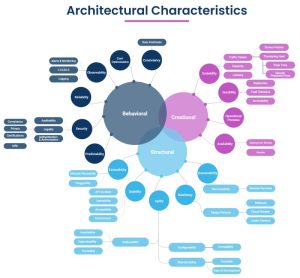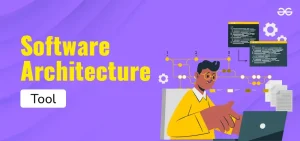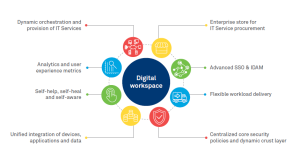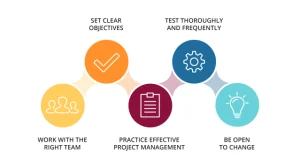Jain Software’s Guide to Optimizing Software Architecture
In Business, Official BlogAs the scope of technologies is expanding at an unprecedented rate in today’s world, the need to design an effective architecture of the required software systems is vital in order to achieve effectiveness, scalability, and sustainability. Jain Software comprehend this wisdom about software architecture that is a critical platform for the execution of any application. So, this guide will consider the main points of the principles, strategies, and tendencies of the proper software architecture to satisfy business and general needs as well as remain effective in the long run.
Understanding Software Architecture Software architecture entails a high-level view of a software system including components, their organization, and principles used in developing and enhancing the structure of the software system.
Software architecture entails a high-level view of a software system including components, their organization, and principles used in developing and enhancing the structure of the software system.
Effective software architecture is essential for:
Scalability: Alternatively, it supports growth in users and the volume of data generates by users.
Performance: Achieving responsible and adequate key operation.
Maintainability: Enabling greater simplicity involving any changes and updates to be made.
Security: Mitigation of risks and dangers It is significant to be protected from vulnerabilities and threats to ensure that they do not derail achievements and progress.
Flexibility: Flexibility that comes with meeting ever-shifting standards and rising to new technologies.
These are the aspects at Jain Software that we consider to make it possible to supply not only functional but superior and customizable solutions.
Optimizing Software Architecture Puzzles
1. Modularity
Modularity can be described as designing a system such that it is composed of small, integral, and loosely interacting modules or subsystems. There should be one responsible functional in a module and the modules should not be tightly connected with each other. This principle improves maintainability and scalability, making it easier to adjust the system following changes.
Example: In a web application, there can be different modules, each of which can embody different functionalities of the application (for instance, authentication, users management, data processing).
2. Abstraction
By applying the principle of abstraction, irrelevant details of a system are not visible but only significant aspects are. This makes the interaction and embrace of the other components more comfortable and manageable on this system.
Example: Instead of directly querying the database using SQL the application often utilizes API to interact with the database.
3. Encapsulation
Encapsulation means a way of sharing only the interfaces of a module with other modules while the original implementation of those modules can remain unknown to the other modules. This is lessens reliance on third party components and improves the stability of the design.
Example: In an e-commerce application, the entire payment logic could be hidden within an organized module while making available only methods for payment invocation and confirmation.
4. Separation of Concerns
This asserts that a software system should be sliced into separate parts to respond to a particular concern or kind of functionality. This splits makes the distinction clear and will also help in respacing the elements and make the layout less cluttered.
Example: Dividing the controls for the user interface from the controls that implement solutions to business requirements in a web application.
5. Scalability and Performance
Scalability is about developing the system so that it can handle more loads as use increases without affecting its productivity. This includes ‘horizontal scaling’ (a technique of adding more ‘machines’ to the system) and ‘Vertical scaling’ (a technique of adding more power to the existing machines).
Example: Introducing the load balancers to help in the dispersing of loads across a variety of servers.
Sample of Approaches for the Enhancement of Software Architecture
1. Adopt Microservices Architecture
Microservice architecture decomposes an application into small components, which are focused on delivering unique features. This improves scalability and maintainability of the originated system because complicated logic is kept to the minimum.
Benefits:
Flexibility of services where each service can run independently and at its own scale.
Improved fault isolation.
They plan for flexibility in obtaining technology to support the provision of a variety of services.
Challenges:
Inclusion of a series of service calls to be processed, thus complicating the flow of inter-service communications.
Risk of overhead in order to achieve integration across services being provided.
2. Implement Caching Mechanisms
It is the process of temporarily putting data that is frequently used in the near and immediate future into a temporary storage area.

Techniques:
Caching systems and applications directly resident in the RAM, (eg. , Radis, Me cached).
CDNs for statics: There exist Content Delivery Networks that one can use for the provision of the static content.
Benefits:
This has helped to lessen the load place on the database hence enhancing its efficiency.
This makes sure that end-users obtain response time results hence satisfying the requirement of improving their response rates.
3. Leverage Containerization and Orchestration
Containerization is the process where an application is entirely wrapped up along with all the dependencies in a container to match the environments. Orchestration tools are used to ensure that the containers along with their application and its components are deployed, scaled, and even run.
Tools:
Docker for containerization.
Kubernetes for orchestration.
Benefits:
Simplified deployment and scaling.
With enhanced resource utilization and isolation, there is a propensity to achieve better results.
4. Use Asynchronous Processing
Those wherein the threads that are to be processed do not have to be executed in order are best run through Asynchronous processing since it enhances responsiveness as well as scalability.
Techniques:
Core producer applications (e. g. , RabbitMQ, Kafka).
Job queues / background processing (e. g. Celery, Sidiqi).
Benefits:
Reduced latency for end-users.
Better resource management.
5. Optimize Database Design
In the formation of the database, it is very crucial to vigorous the flow and coordinates the data storage, retrieval, and managing.
Techniques:
Normalization to eliminate redundancy.
Indexing that helps to improve query response time early on.
Now that we will be working with large sizes of data, we will need to partition these into achievable sizes.
Considerations:
Go with the flow and select proper type of databases – are they relational (SQL) or non-relational (NoSQL) yes or no ?.
Find out optimal settings and adjustments for database and apply them often.
6. Implement Robust Security Measures
Security should be incorporated in software architecture namely addressing probable weakness or threats.
Techniques:
Use of secure sockets layer and transportation and storage in encrypted format.
OAuth or JWT, and other techniques of authentication and authorization.
Security audits, periodic or continuous vulnerability assessments and scans, and tracking novel threats in progress or through logs.
Best Practices:
Comply to proper standards and industry regulatory measures.
Convince the development team on what measures should be taken to reduce the vulnerability in coding.
7. Implement Automated Testing and Continues Integration /Deployment (CI/CD).
While moving through the CI/CD pipeline, automated testing of code changes becomes an obligatory step to validate and integrate them.
Benefits:
Early detection of issues.
This, in turn, leads to faster and more reliable cycles for the deployment of solutions that is not easy to achieve in traditional development environments.
Tools:
Jenkins, GitLab CI for CI / CD.
Selenium is used to automate browser the Junit framework is used to support the testers for automation.
Case Study: Software architecture optimization is important in any software organization and this case involves the company known as Jain Software that deals with software solutions and services.
The Challenge
For instance, a client had an initial application that was monolithic in nature, trying to find better performance and scalability were an issue. The objective was making changes to architecture to support more intense loads, pertaining to the user traffic.
The Solution
Adopted Microservices Architecture: As a result, we had a large monolithically application, which was divided into functional microservices that can process user management, take orders, and manage inventory.
Implemented Caching: By incorporating R
 edis for caching real-time used data, the loads applied to the database were considerably decreased, and response times considerably increased.
edis for caching real-time used data, the loads applied to the database were considerably decreased, and response times considerably increased.
Leveraged Containerization: In terms of packaging, we adopted Docker to create cell like structures for the microservices and for managing them, Kubernetes was used while for a consistent structure in the different environments, Docker was used.
Asynchronous Processing: Many asynchronous tasks like email notifications and report generation followed by message queues using RabbitMQ.
Database Optimization: The methods which were put into practice in order to improve database performance were redesigning of the database schema, Index creation and large table partitioning for handling large volumes of data.
Enhanced Security: Security of data was enhanced with privacy ciphers; user authentication; and security assessments frequently conducted.
The Outcome
The optimized architecture resulted in:
Improved Scalability: The load could now be scaled up without explicit performance penalties to the application, making it complicated for users.
Enhanced Performance: This effectiveness was realized in the fact that response times went down meaning that users would have a better experience.
Easier Maintenance: The idea of designing microservices based on modules proved to be advantageous because it facilitated the improvement and modification of each component of the system.
Robust Security: Security measures were strengthened to keep the data safe and adhere to the principle of the without Compromise policy of the industry.
Conclusion
Software architecture is an important process than enables application owners to achieve the goal they set out to. The best practices like modularity, abstraction, encapsulation or separation of concerns, microservices and caching, better use of the container concepts, automated testing etc. can help you in building better, scalable, high performing and more secured software solution.
At Jain Software we have vowed to provide the best optimized software architecture that will enable our clients meet their needs and goal fully. We welcome your business and assure you that our team of professionals will guide you in fulfilling your vision whether it is a new project or a project in the works. Please makes contact with us today to learn more on how we can assist you in enhancing your software architecture.


















